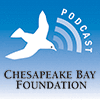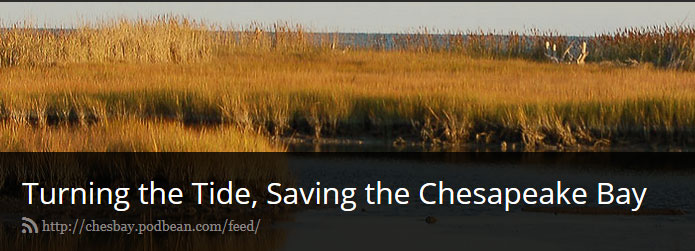

Welcome to Turning the Tide, the Chesapeake Bay Foundation's podcast that ran from March 2015 to September 2018. Join President Will Baker and guests as they share with you their thoughts on what it will really take to turn the tide—to restore our Bay and its rivers and streams.
EPISODES
-
September: Smartweeds Have Much to Teach
15 Sep 2021Welcome to Biology class. In this episode, John Page paints a vibrant picture of a high school class learning the skills of observation from aboard canoes in the freshwater marshes of Mason Neck National Wildlife Refuge. A closer examination than students expect reveals quite a lot about smartweed (Polygonum punctatum) and tearthumb (Polygonum sagittatum). You just might agree with the closing words of a student, "Gee, I never thought that there could be so much to learn about two little plants."
-
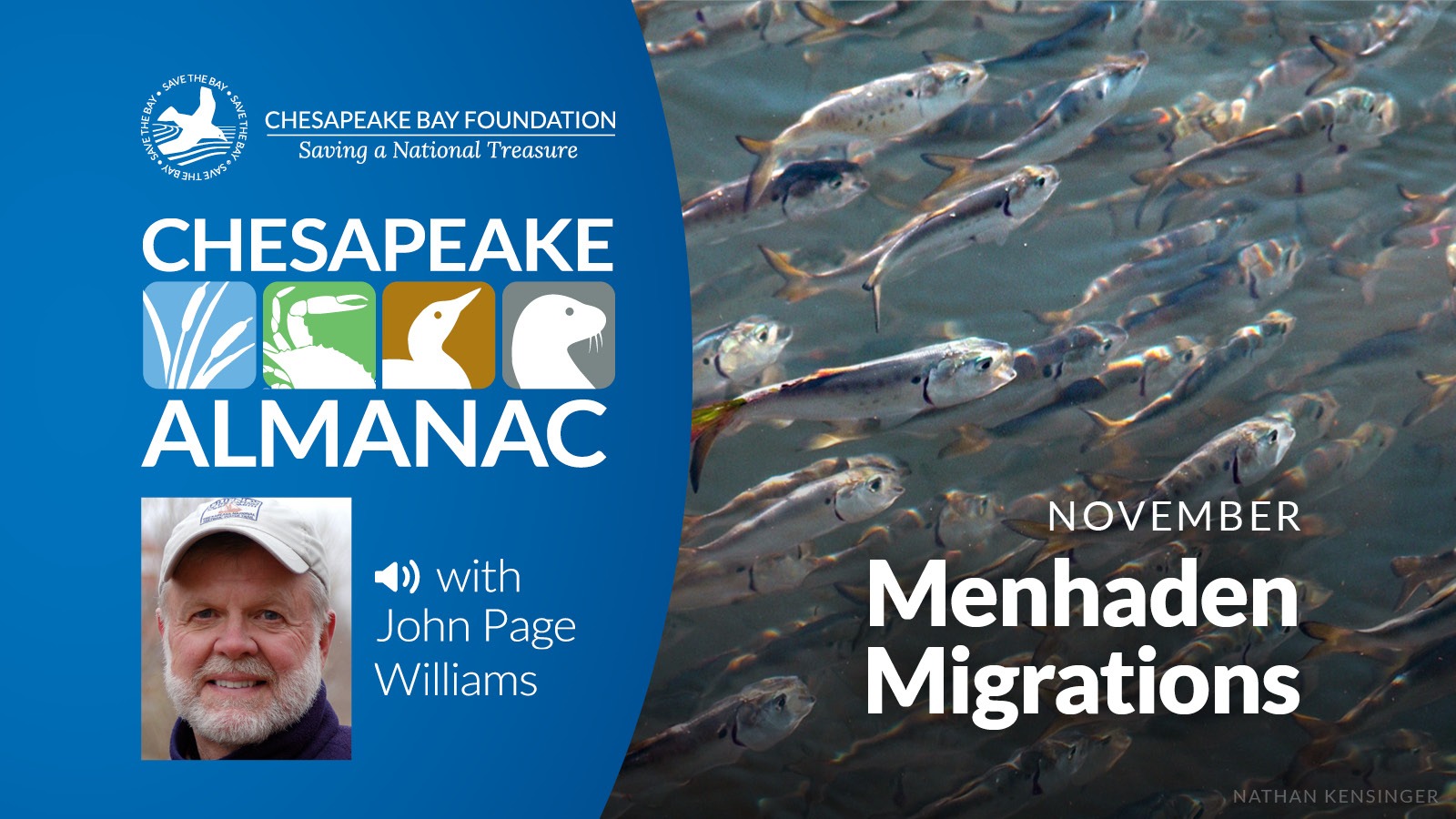
November: Loons - Fall's Finest Fishermen?
10 Nov 2021Loons are as well loved in summer by people on North Country lakes as ospreys are by us here. But at this time of year, they descend on the Chesapeake Bay in the thousands. In this episode, John Page shares his personal introduction to the Chesapeake's fall loons and their extraordinary "banquets" of menhaden.
-
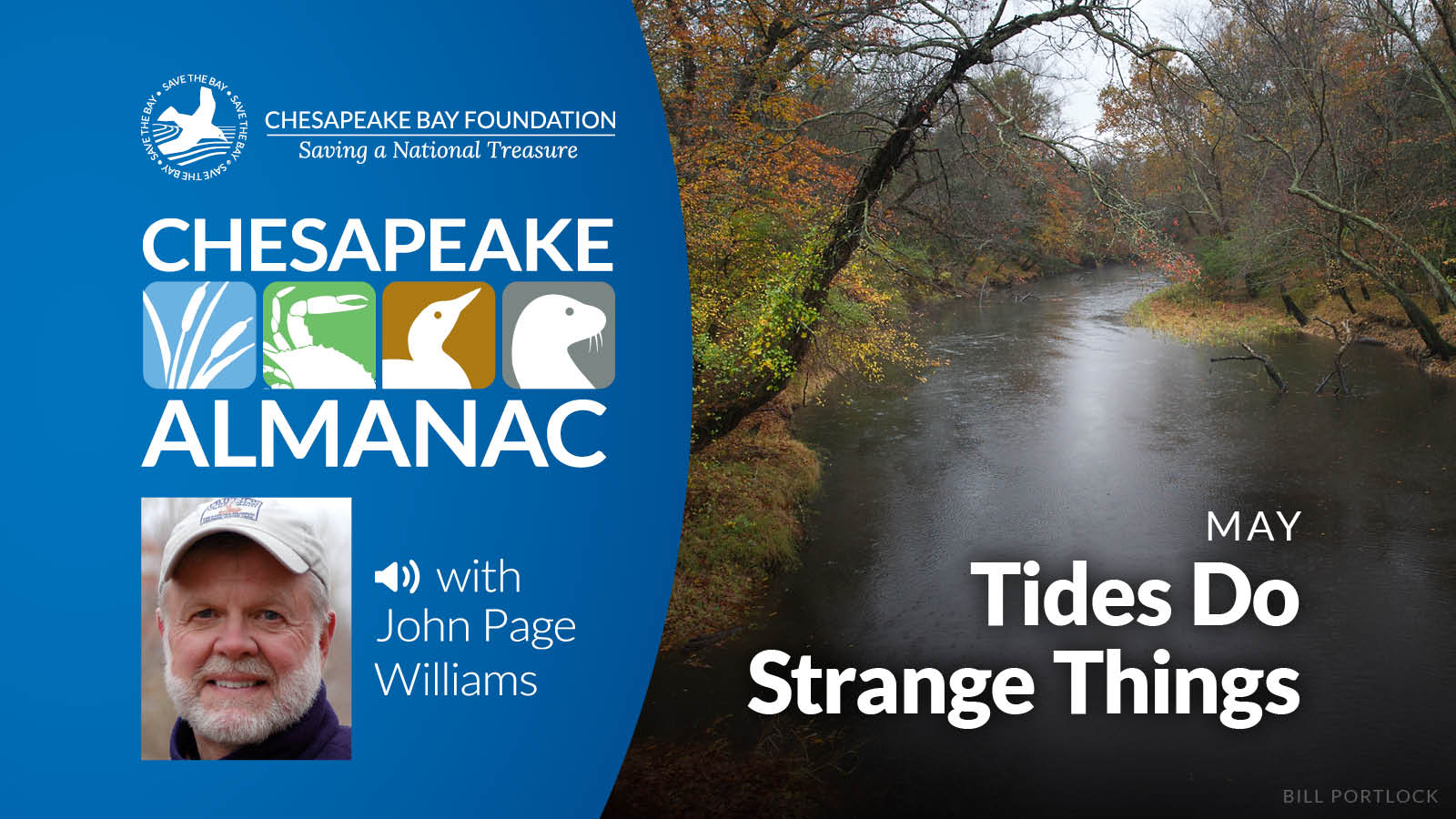
May: Tides Do Strange Things
26 May 2021 00:07:02How does a freshwater town 58 miles from the Chesapeake Bay have highest average daily tide change of any location on the Chesapeake? John Page Williams explains the many elements that converge to create Walkerton, Virginia's unique place on the tide tables.
-
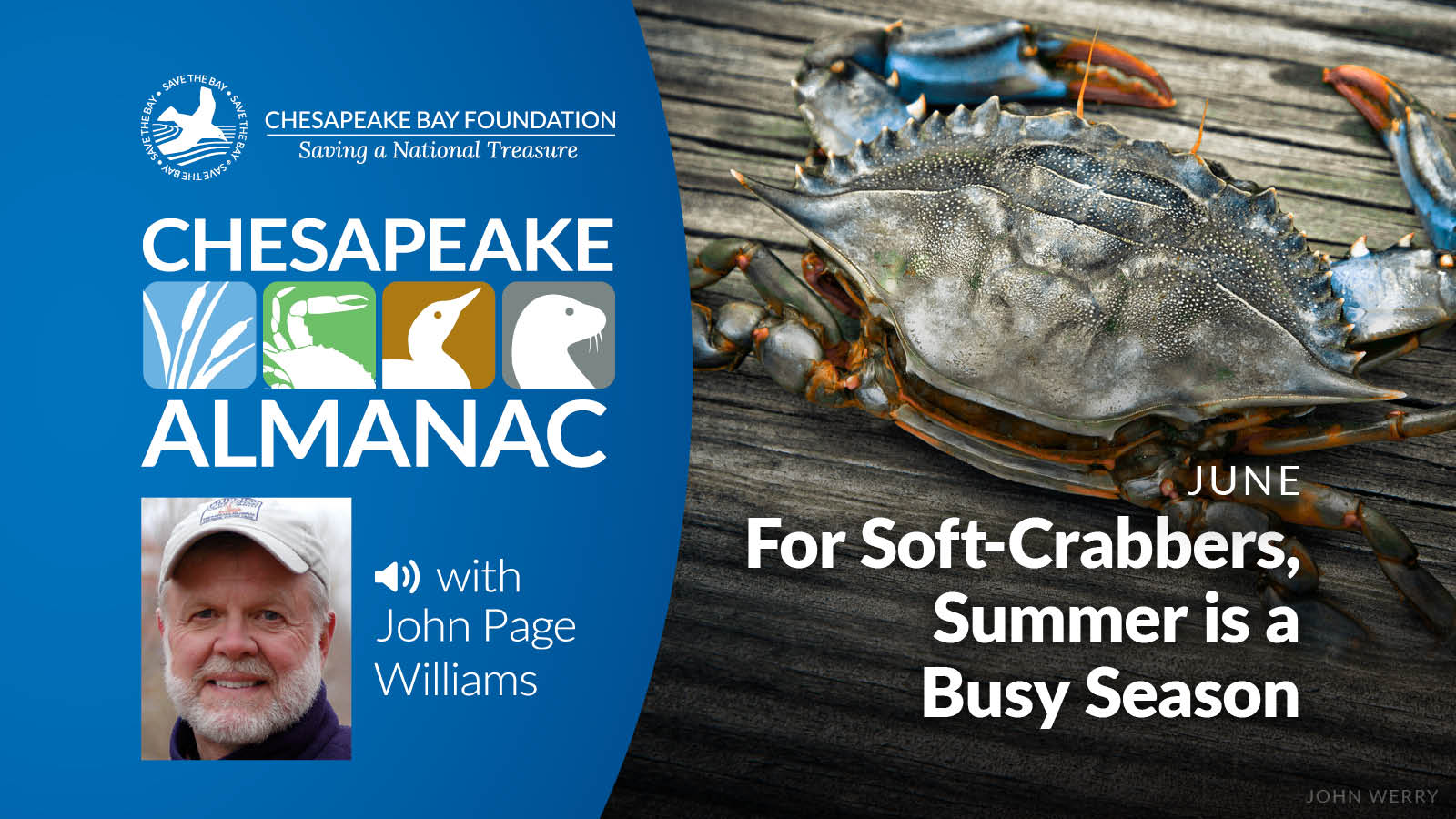
June: For Soft-Crabbers, Summer Is a Busy Season
02 Jun 2021During a 24- to 30-month life span, a blue crab will molt over 20 times. What goes on inside the animal to trigger the shedding of it's entire shell? And what does it mean for the crab, and for the crabbers who do business in soft crabs? John Page Williams sheds light on both the human and critter stories.
-
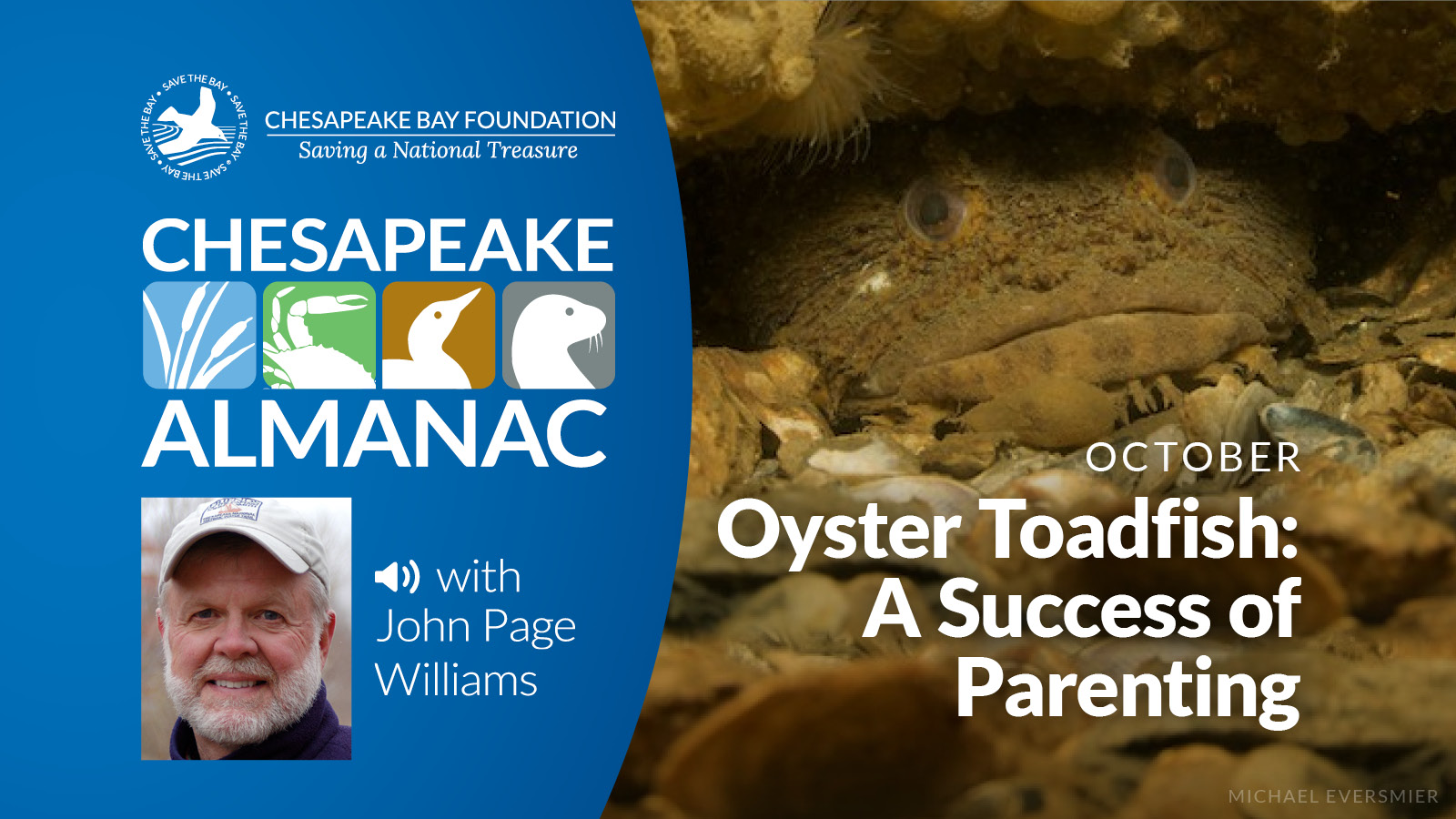
October: Oyster Toadfish: A Success at Parenting
20 Oct 2021From an angler's point of view, the oyster toadfish might not be good for much. But their parenting technique varies greatly from most of the fish that end up on the dinner table. In this episode, John Page reflects on how his father shared the story of a why a fish with a face only a parent could love deserves some parenting respect.
-
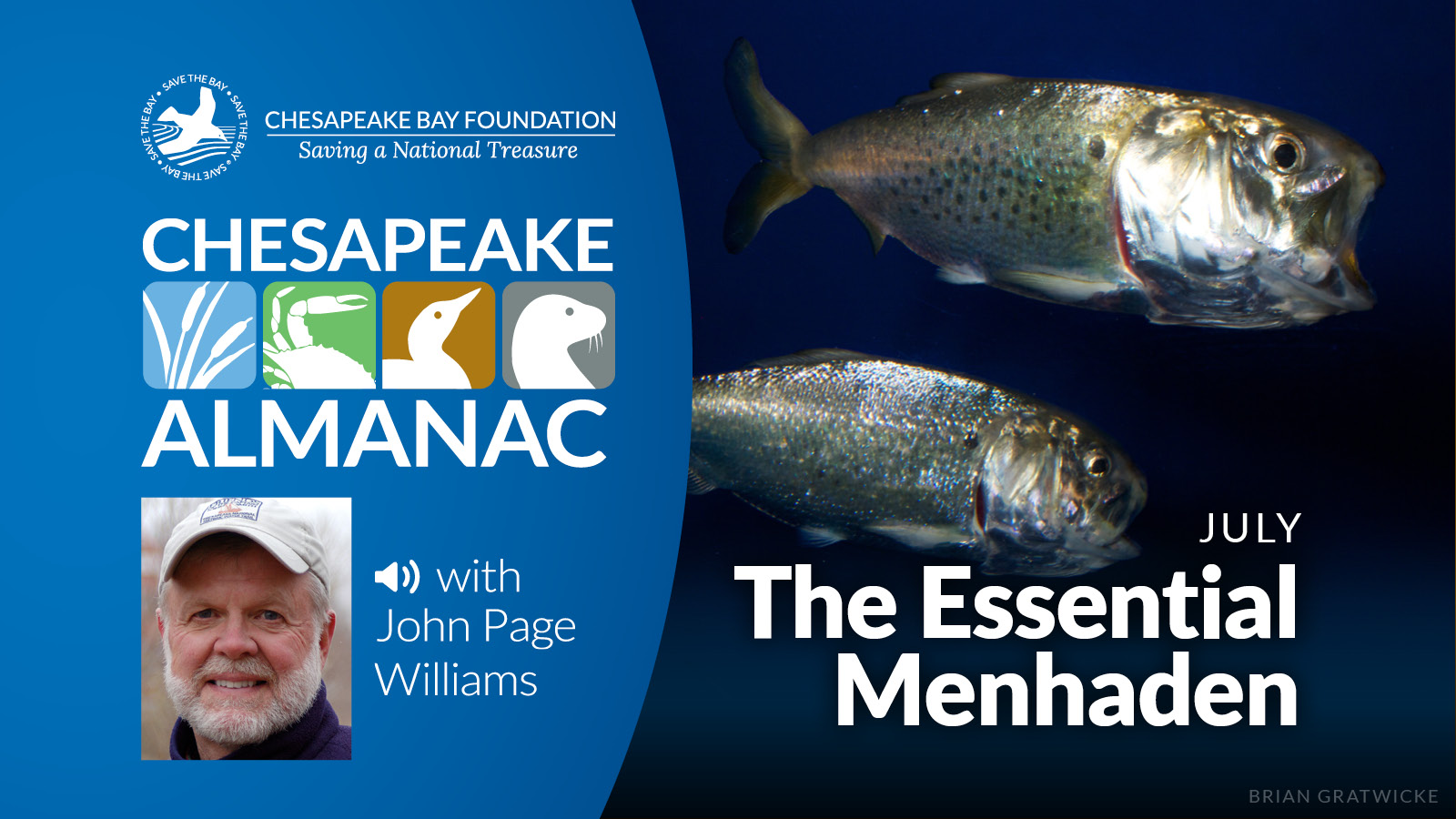
July: The Essential Menhaden
07 Jul 2021Join John Page Williams as he shares the big story behind the little fish on which much of the Bay's economy depends.
-
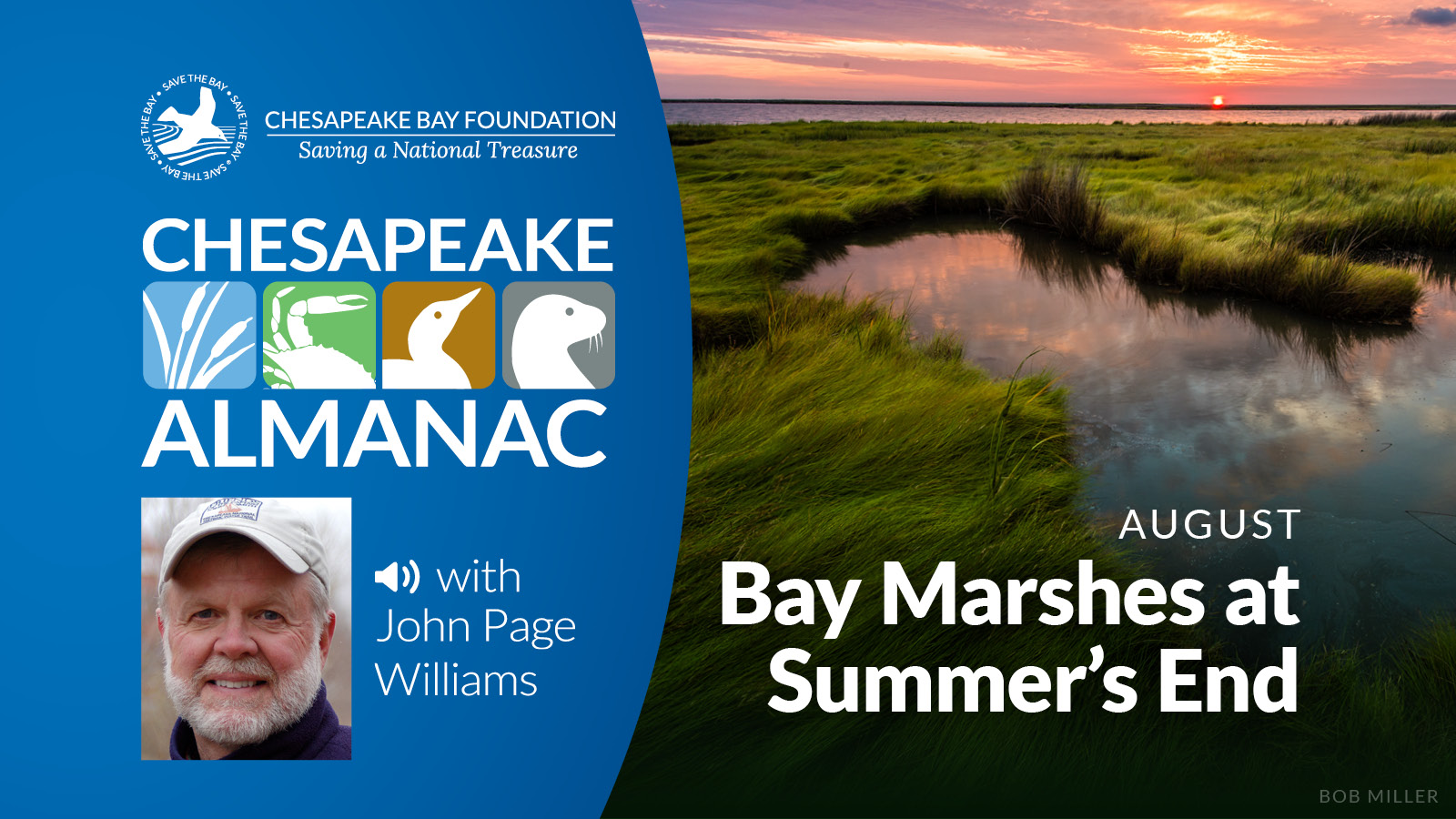
August: Bay Marshes at Summer's End
25 Aug 2021In this episode, John Page peels back the layers of Bay marshes, from their lush vegetation above to their unique and highly adaptive systems below.
-
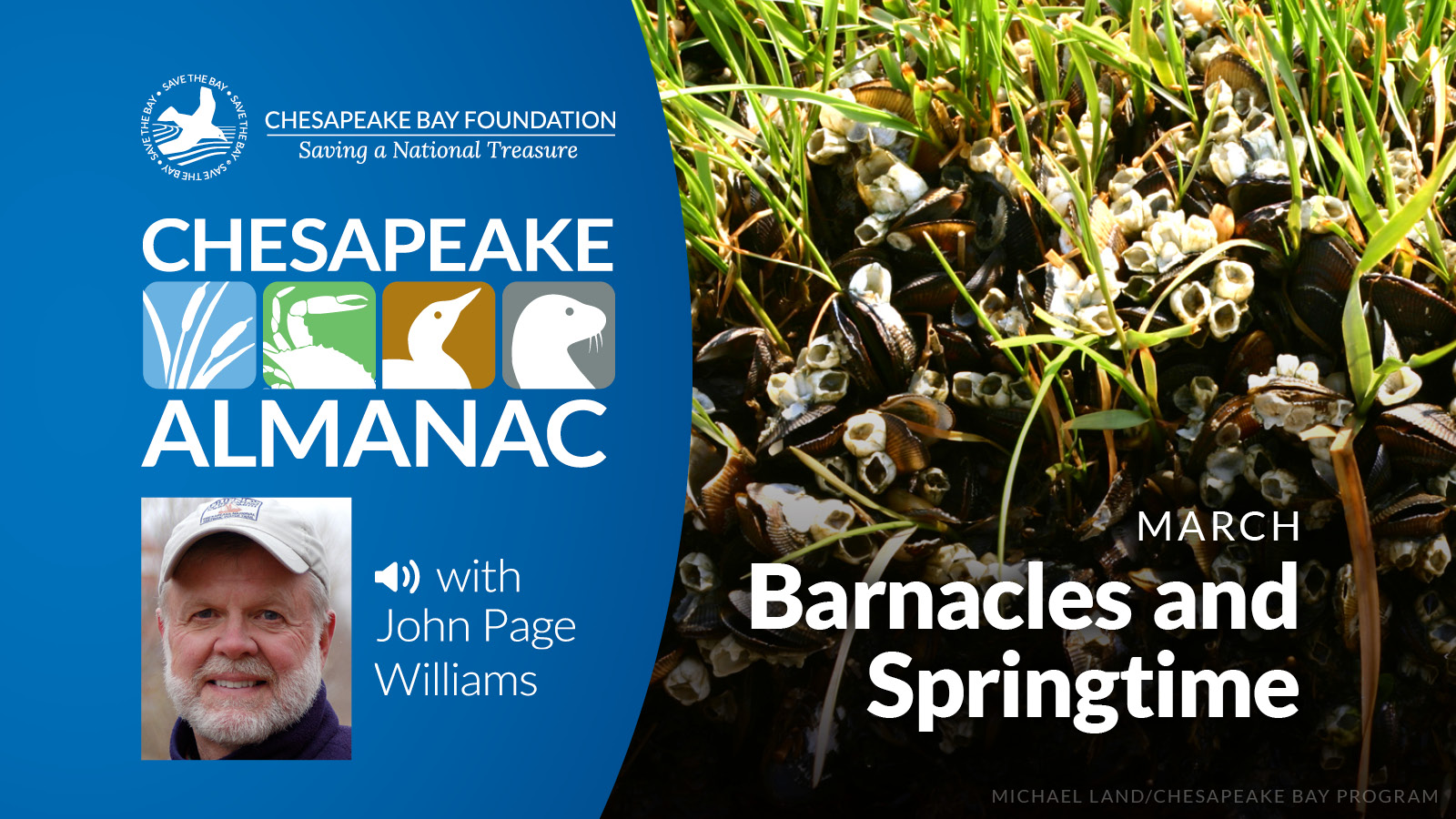
March: Barnacles and Springtime
09 Mar 2022In March, you can see the tiny, wedge-shaped larvae of barnacles catching early spring plankton. They scull about with their six legs, not yet ready to settle and grow into the barnacles we know. Most Bay lovers have at least one good barnacle story. Invariably these tales involved hands cut by sharp shells, or speed- and fuel-robbing crust on boat bottoms. But these crustaceans do more than create havoc for humans. They create little ecosystems on dock and pier pilings and fallen trees. In this episode, John Page opens up the world of yet another small Bay creature that has a story that surpasses its tiny size.
-
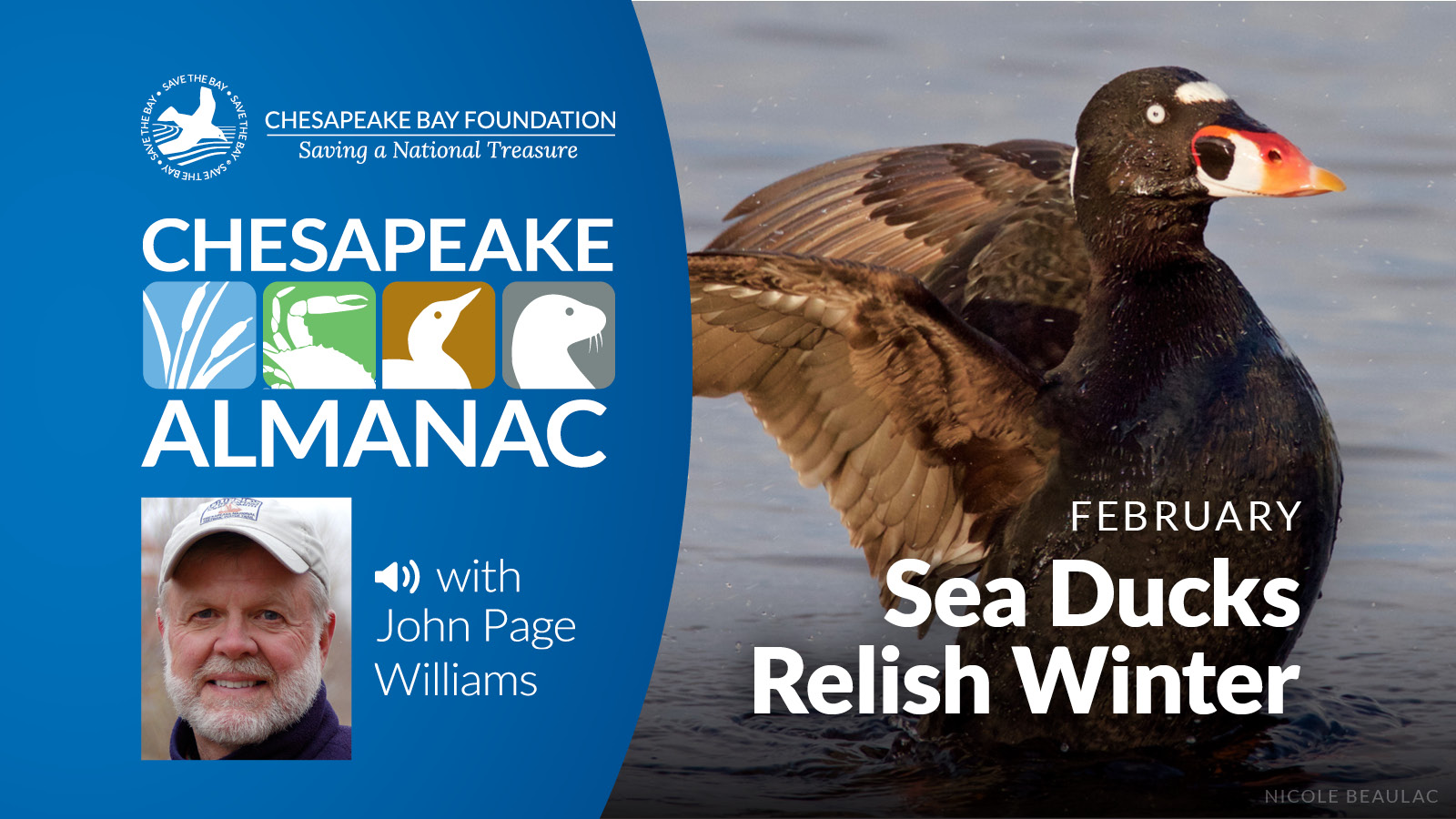
February: Sea Ducks Relish Winter on the Chesapeake
16 Feb 2022Winter brings several diving ducks from Canada and Alaska that thrive on the open Chesapeake. In this episode, John Page introduces us to four sea duck species attracted to the Bay's historically rich bottom food stores found in oyster beds.
-
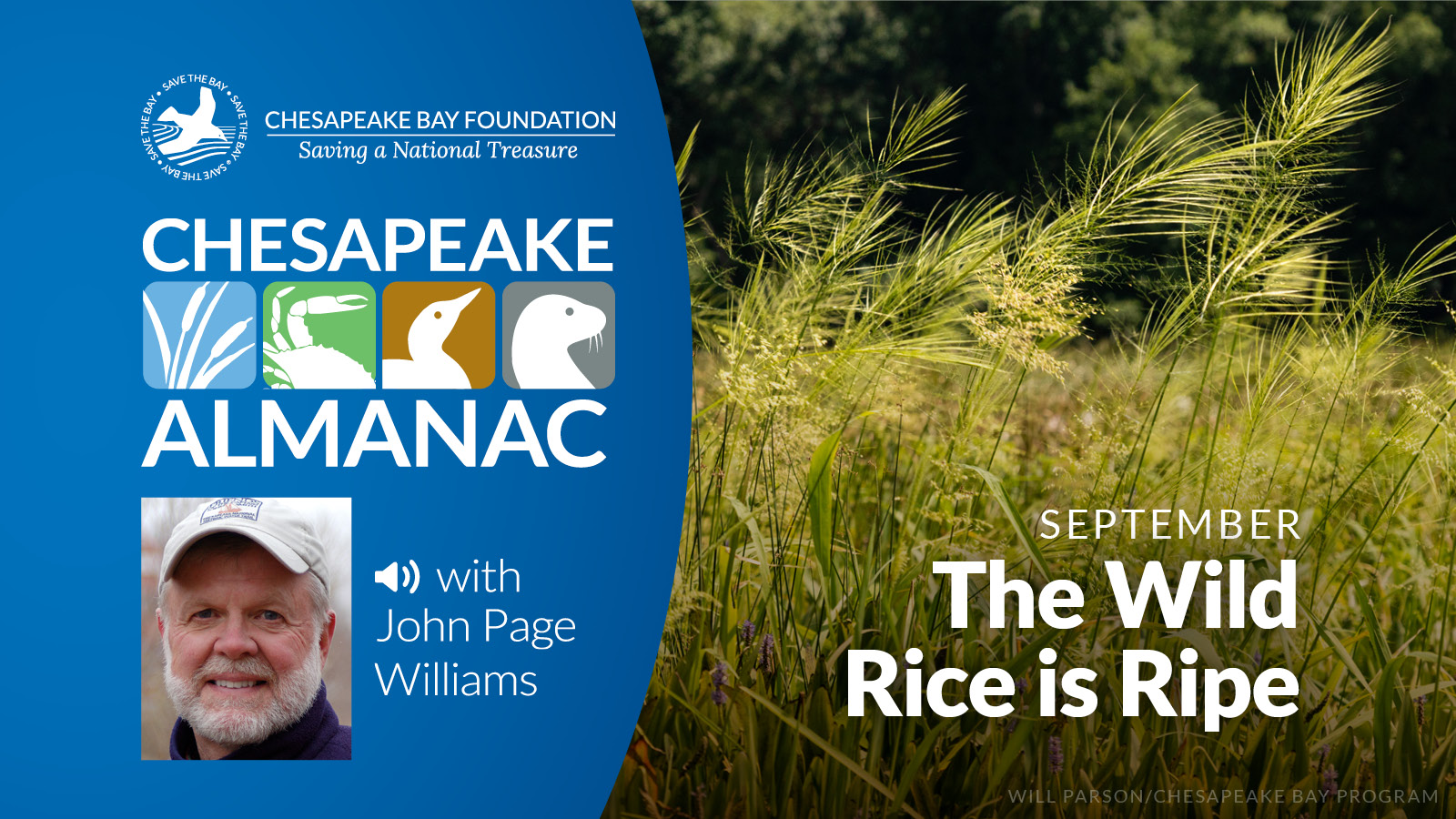
September: The Wild Rice Is Ripe
01 Sep 2021In this episode, John Page introduces us to wild rice. Stands of ripe wild rice in tidal fresh marshes along the Bay--and the blue-winged teal, red-winged blackbirds, and bobolink that enjoy it--are tell-tale signs of fall along the Bay.
-
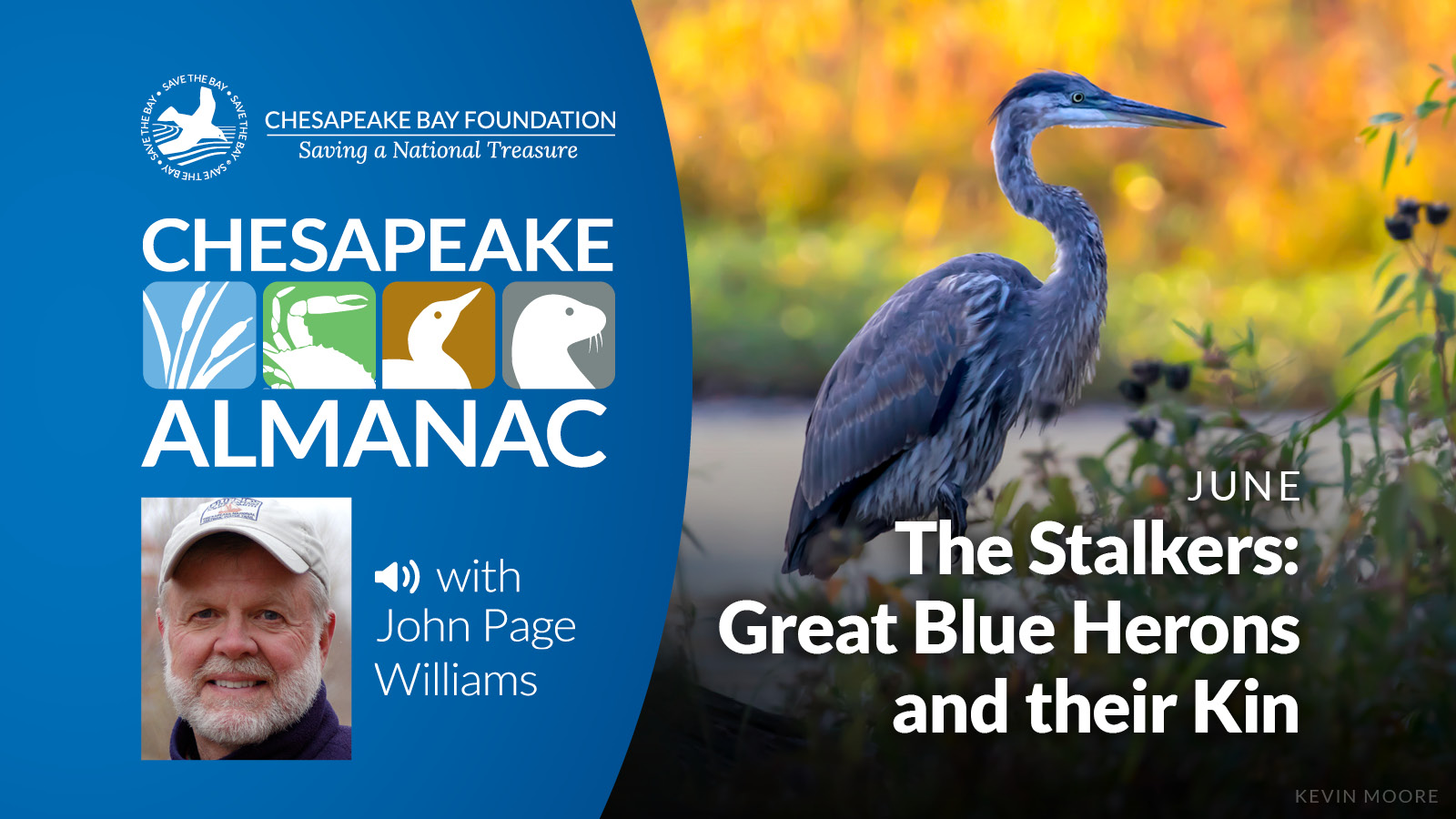
June: The Stalkers - Great Blue Herons and Their Kin
16 Jun 2021In this episode of Chesapeake Almanac, John Page Williams shares some fabulous facts about one of the Chesapeake's best-loved birds, the great blue heron (Ardea herodias).
-
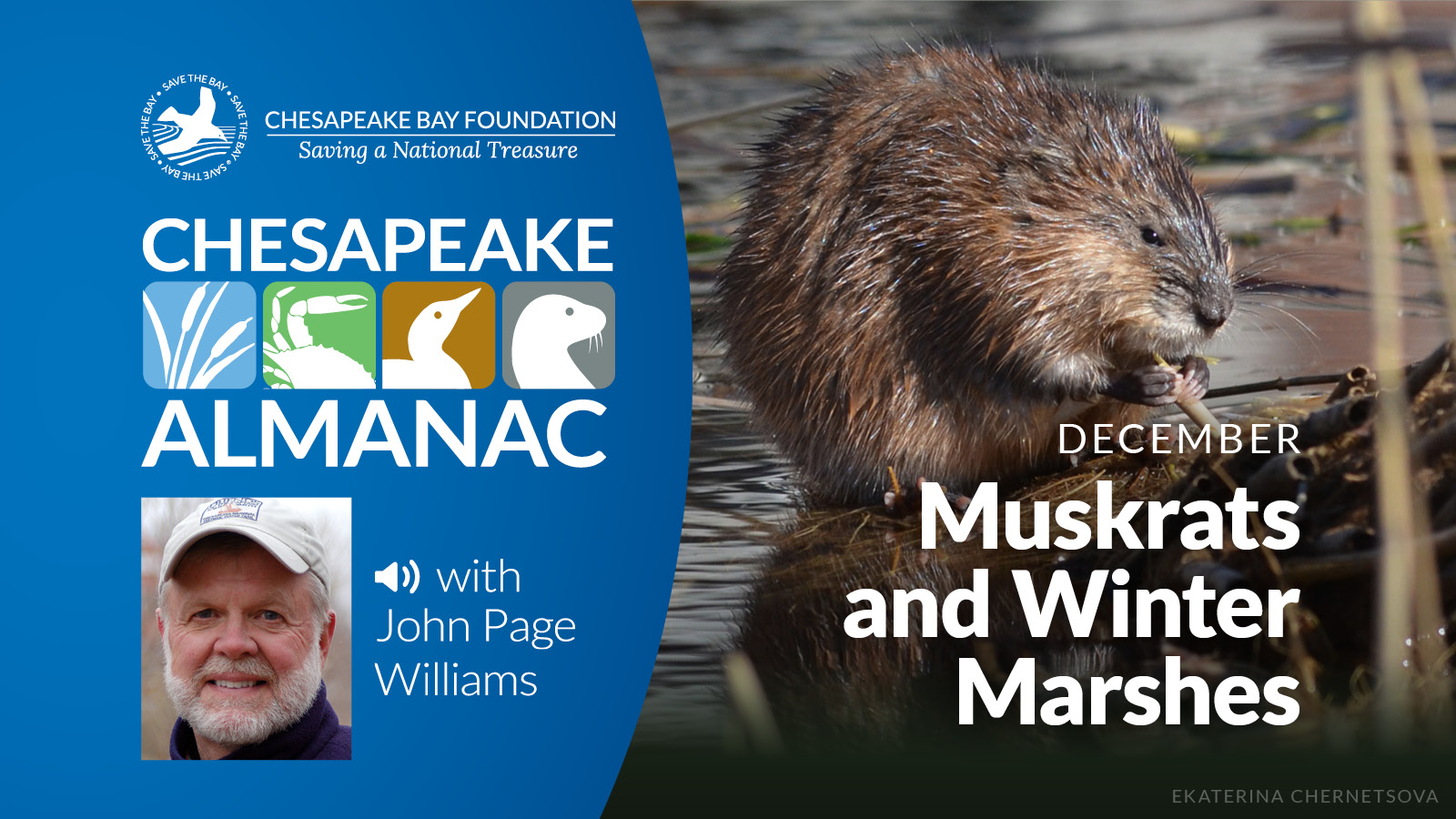
December: Muskrats and Winter Marshes
15 Dec 2021In this episode, John Page introduces us to the Chesapeake's most abundant aquatic mammal and one of the few that are active in winter--muskrats. Curious how a warm-blooded mammal can live in an aquatic habitat in the dead of a Chesapeake winter? Learn that and more.
| Items 109 - 120 of 129 | Previous | 1 | 2 | 3 | 4 | 5 | 6 | 7 | 8 | 9 | 10 | Next |



